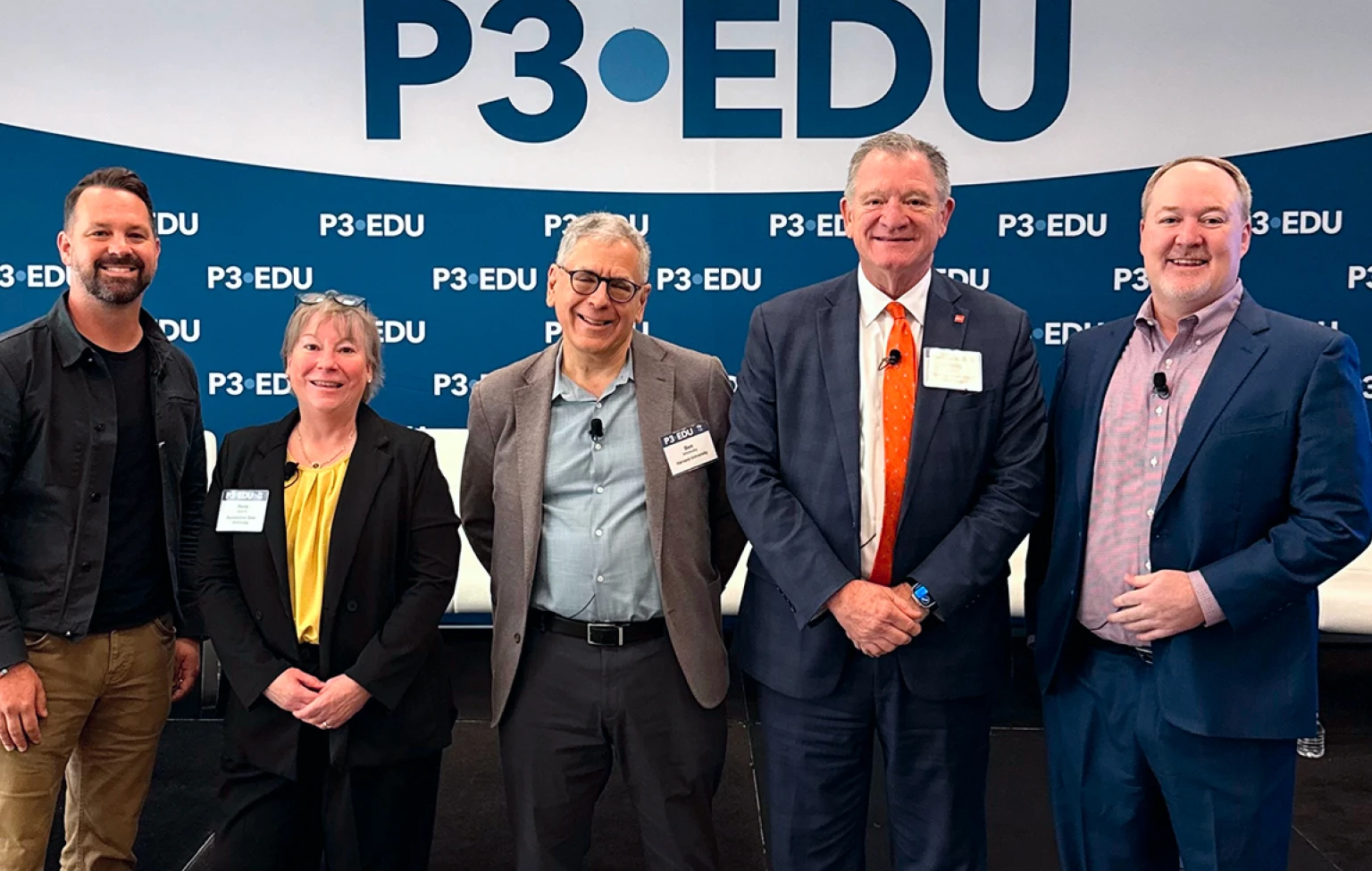As workforce demands shift faster than traditional academic models can adapt, a new era of higher education partnerships is taking shape: one built on alignment, flexibility and trust.
Universities are moving beyond online delivery support. They want partners who co-create solutions that address labor shortages and strengthen institutional capacity.
That vision was at the center of “Career Connected Learning and Workforce Solutions,” a panel at the 2025 P3 Higher Education Summit in Atlanta.
Bowling Green State University President Rodney Rogers and Evidence In Motion (EIM) CEO David Eby shared how collaborative innovation can redefine what university partnerships deliver for students, employers and the public.
Mission Alignment: The Foundation of Effective University Partnerships
Sustainable partnerships start not with revenue models or enrollment goals, but with shared mission.
Eby emphasized that mission alignment in higher education is the foundation for every collaboration. Understanding a university's purpose and pain points is more important than a one-size-fits-all playbook.
"Every institution is not the right partner for every OPM," Eby said. "We have to align from a mission standpoint on the challenges we want to solve."
That philosophy extends beyond the president's office. Eby noted that when registrars, financial aid staff and faculty understand the goals and structure of a partnership, execution becomes smoother and more sustainable.
"It's not just about senior buy-in," he said. "Every part of the university needs to know what we're doing, how we're doing it and why."
Why it matters:
Universities are under increasing pressure to demonstrate relevance, return on investment and operational efficiency. Aligning around mission, not just metrics, creates a foundation for innovation that lasts beyond leadership transitions or contract terms.
Flexible University Partnerships Build Capacity, Not Dependence
Traditional partnership models often create reliance. EIM's model aims to build capability.
Eby described flexible university partnerships as dynamic, evolving over time as institutions gain expertise and infrastructure.
"At the end of our relationship, the institution should be in a place where they can continue to support their students without us," he said.
That commitment means revisiting contracts every few years to ensure mutual value and adjusting services as programs mature. Early in the partnership, EIM may provide extensive support with accreditation and curriculum design. Later, universities assume greater control.
"Delivering bad news is a lot easier early than it is late," Eby added. "Transparency isn't just a value, it's a performance strategy."
Why it matters:
The future of higher education partnerships will depend on adaptability. Models that evolve as institutions grow are the ones most likely to endure — and to elevate institutional self-sufficiency rather than dependency.
Relevance and Work-Integrated Learning Strengthen Public Trust
For Rogers, the power of partnership lies in relevance, the ability to connect education to opportunity.
BGSU's collaboration with EIM began as a strategic response to health care workforce shortages in Ohio and beyond. By launching hybrid and accelerated programs in physical and occupational therapy, the university was able to expand access, strengthen career pathways and address labor gaps in rural communities.
"It's not so much where students go to college; it's how they go to college," Rogers said. "We've not done a good job of empowering students to understand how to go to college, especially those we're trying to build social mobility with."
BGSU has since embedded design thinking in higher education across programs to help students become "self-designers" of their college and career journeys. The approach connects applied learning with long-term employability.
Why it matters:
Higher education stays relevant when it prepares students for contemporary realities in work and society. Flexible, work-integrated approaches help sustain public confidence in institutions’ ability to adapt.
Building Trust and Transparency in Academic-Industry Collaboration
The final ingredient in any effective partnership? Trust.
Both leaders agreed that transparency and dialogue — not rigid contracts — determine long-term success.
"If you go to the contract to solve a problem, you've already lost the relationship," Rogers said.
Eby echoed that view: "We're here to solve institutional challenges, not create them."
At a time when many institutions are reassessing university partnership relationships, this mindset represents a shift from transactional agreements to transformational alliances.
Why it matters:
Trust accelerates innovation. When universities and partners communicate openly, they can adapt to challenges quickly, keep programs aligned with workforce realities and sustain impact well beyond the initial launch.
The Future of Career-Connected Partnerships
As Rogers and Eby's discussion in Atlanta made clear, the most effective partnerships in higher education aren't about outsourcing, they're about co-creating.
By centering on mission alignment, flexibility, relevance and trust, universities and their partners can design programs that respond to workforce needs, expand access and uphold academic integrity.
The lesson for higher education leaders is clear: the next generation of partnerships won't just deliver online programs. They'll deliver career-connected learning and workforce solutions that strengthen communities and redefine the value of higher education.

